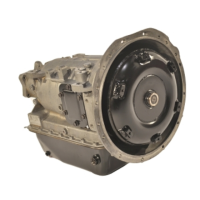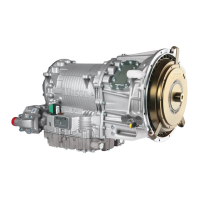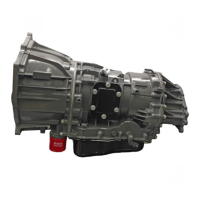12
c.
Neutral Cool-Down Check Procedure
The neutral cool-down check determines if the transmission fluid cools following an
engine load condition. Perform this check immediately after the engine speed has
been recorded in the stall test.
• Record the converter-out fluid temperature.
• With the transmission remaining in N (Neutral) or P (Park), run the engine at
1200–1500 rpm for two minutes to cool the fluid.
• At the end of two minutes, record the converter-out fluid temperature.
d. Results
If the engine stall speed is more than 150 rpm below the stall speed specified by the
engine manufacturer, an engine problem is indicated, such as the need for a tune-up.
If the engine stall speed is more than 150 rpm above specification, a transmission
problem is indicated, such as slipping clutches, cavitation, or torque converter
failure.
An extremely low stall speed, such as 33 percent of the specified engine stall rpm,
during which the engine does not smoke, could indicate a free-wheeling torque
converter stator.
If the engine stall speed conforms to specification, but the transmission fluid
overheats, refer to the Neutral Cool-Down Check Procedure. If the fluid does not
cool during the two minute cool-down check, a stuck torque converter stator could
be indicated.
If the engine stall speed conforms to specification and the cool-down check shows
that the transmission fluid cools properly, refer to the applicable AT Service Manual
SM1241EN (latest revision) for troubleshooting procedures.
NOTE: Environmental conditions, such as ambient temperature,
altitude, engine accessory loss variations, etc., affect the power input
to the converter. Under such conditions, a stall speed deviation up to
±150 rpm from specification can be accepted as within normal range.

